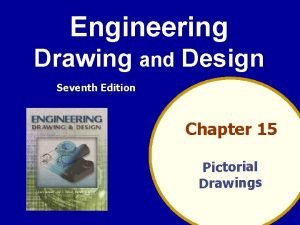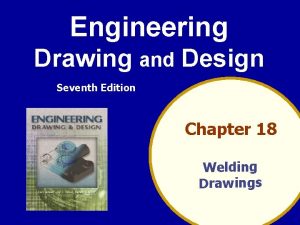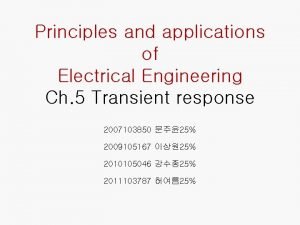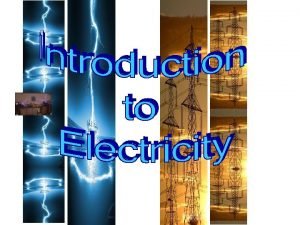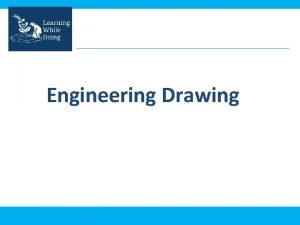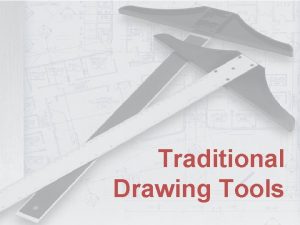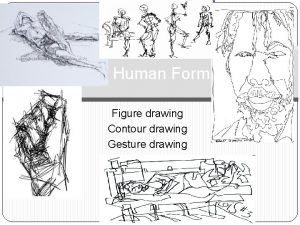ELECTRICAL ENGINEERING DESIGN AND DRAWING II Electrical Engineering












- Slides: 12

ELECTRICAL ENGINEERING DESIGN AND DRAWING - II Electrical Engineering Fourth Semester

Contactor • A contactor is an electrically controlled switch (relay) used for switching an electrical power circuit. A contactor is typically controlled by a circuit which has a much lower power level than the switched circuit, such as a 24 -volt coil electromagnet controlling a 230 -volt motor switch. • Contactors are used to control electric motors, lighting, heating, capacitor banks, thermal evaporators, and other electrical loads. • A contactor has three components. The contacts are the current carrying part of the contactor. This includes power contacts, auxiliary contacts, and contact springs.

Contactor

DOL starting of 3 -phase induction motor

Forwarding/reversing of a 3 -phase induction motor

Star delta starter for 3 -phase Induction Motor

Electrical Earthing • Definition: The process of transferring the immediate discharge of the electrical energy directly to the earth by the help of the low resistance wire is known as the electrical earthing. • The electrical earthing is done by connecting the non-current carrying part of the equipment or neutral of supply system to the ground. • To protect human lives as well as provide safety to electrical devices and appliances from leakage current we use earthing. • To avoid the risk of fire in electrical installation systems.

Methods of Earthing Pipe and plate earthing

Pipe Earthing: • A galvanized steel and a perforated pipe of approved length and diameter is placed vertically in a wet soil in this kind of system of earthing. It is the most common system of earthing. • The size of pipe to use depends on the magnitude of current and the type of soil. The dimension of the pipe is usually 40 mm (1. 5 in) in diameter and 2. 75 m (9 ft) in length for ordinary soil or greater for dry and rocky soil. • The moisture of the soil will determine the length of the pipe to be buried but usually it should be 4. 75 m (15. 5 ft).

Plate Earthing:

Plate Earthing: • In plate earthing system, a plate made up of either copper with dimensions 60 cm x 3. 18 mm (i. e. 2 ft x 1/8 in) or galvanized iron (GI) of dimensions 60 cm x 6. 35 mm (2 ft x ¼ in) is buried vertical in the earth (earth pit) which should not be less than 3 m (10 ft) from the ground level. • For proper earthing system, follow the above mentioned steps in the (Earth Plate introduction) to maintain the moisture condition around the earth electrode or earth plate.

THANKS
 Isometric 30 60
Isometric 30 60 Sketch chapter 15
Sketch chapter 15 Engineering drawing and design 7th edition
Engineering drawing and design 7th edition Orthographic projection to isometric projection
Orthographic projection to isometric projection How to make technical drawings
How to make technical drawings Klipsch school of electrical and computer engineering
Klipsch school of electrical and computer engineering Batten wiring
Batten wiring Principle and application of electrical engineering
Principle and application of electrical engineering Tum department of electrical and computer engineering
Tum department of electrical and computer engineering Principles and applications of electrical engineering
Principles and applications of electrical engineering Principles and applications of electrical engineering
Principles and applications of electrical engineering Example of electrical energy
Example of electrical energy สัญลักษณ์gd&t
สัญลักษณ์gd&t

